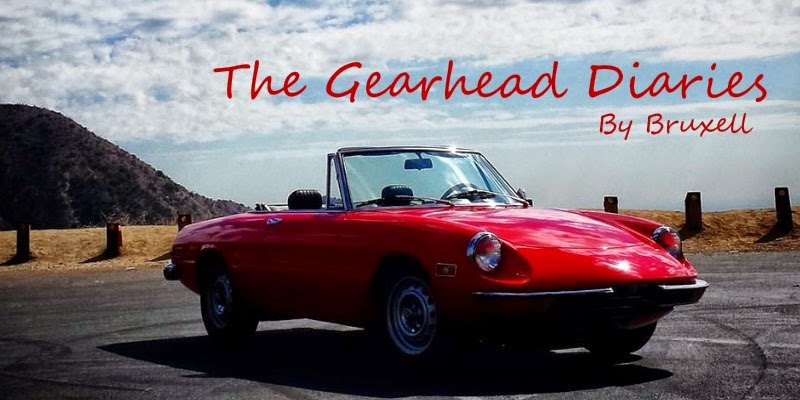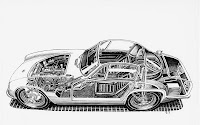 Long ago, when the world was young, gas was cheap, and driving your car off a cliff was generally seen as your problem, there was born a man named Anthony Colin Bruce Chapman. In time, young Colin would become an engineer, and in a quest to prove some of his ideas, he built a racing car and name it Lotus. Whatever else he may have done with his life, was from that moment on, a moot point; the bug had bit, and a gift had been given to driving enthusiasts the world over.
Long ago, when the world was young, gas was cheap, and driving your car off a cliff was generally seen as your problem, there was born a man named Anthony Colin Bruce Chapman. In time, young Colin would become an engineer, and in a quest to prove some of his ideas, he built a racing car and name it Lotus. Whatever else he may have done with his life, was from that moment on, a moot point; the bug had bit, and a gift had been given to driving enthusiasts the world over.Lotus has a always been a car apart. While other manufacturers in Britain were fooling around with bits of tin, and big, iron blocks and heads, Chapman combined innovative engineering, with advanced materials, to spin design into cars that were sophisticated, light, deceptively simple, and fast. From early, space-framed sports racers, based on bits of Austin Sevens, there eventually came road cars, such as the dual purpose Lotus Seven, and the wonderful, Type-14 Elite. These cars, especially the Elite, with its all glass fibre construction, established a pattern and reputation for innovative, competitive designs, that fell apart constantly, but inspired loyalty like few others. If the cars were fragile, who could blame them? They were built down to the minimum tolerances, and the same things that made them difficult, made them extraordinary.
Through good times and bad Lotus have largely kept those core values of light weight and innovation. From winning the Formula One World Championship seven times between '63 and '78, to a string of highly regarded road cars like the Elan, Europa, and Esprit, Lotus have always been at the forefront of using technology and design to produce cars that are a joy to drive.
And today, they ruined all of it...
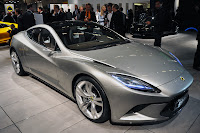 We knew about the third resurrection of the Elite. Debuted last week, it's a pretty thing, if a little like a Ferrari California. That likeness betrays the rot that has set in. This is a Lotus like none that has come before. A GT, with a retractable hardtop, weighing-in at a frankly astonishing 3,700lbs. Light this is not. It will, however, be fast, relying as it does on the brute force of Toyota's 5.0 liter V8... and a supercharger... and a hybrid assist.
We knew about the third resurrection of the Elite. Debuted last week, it's a pretty thing, if a little like a Ferrari California. That likeness betrays the rot that has set in. This is a Lotus like none that has come before. A GT, with a retractable hardtop, weighing-in at a frankly astonishing 3,700lbs. Light this is not. It will, however, be fast, relying as it does on the brute force of Toyota's 5.0 liter V8... and a supercharger... and a hybrid assist.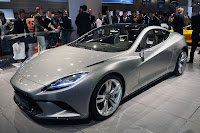
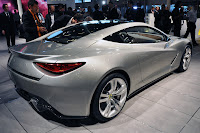
But that was just a teaser. Today, Lotus have dropped no fewer than four new concepts, all of which seem destined for development and production. The new Elite, will be joined by an Elan, and Esprit, and new Elise, and something called the Eterne. All of them suffer the same lack of essential Lotus-ness. They're overweight, powered by big, heavy engines, and are generally disappointing.
Stangely, it's the least Lotus like among them, that I'm closest to being okay with. The Eterne is a new four-door that shares its platform with the Elite. It's large, heavy, and ugly, but it will sell, and it doesn't disfigure the legacy of a great Lotus with its name. Lotus may need to produce cars like these in order to stay alive, but using the Elite name on a car that weighs more than two Type-14s, is a disgrace. At best though, the Eterne looks like someone left a Porsche Panamera in a rock tumbler...
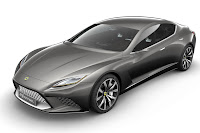
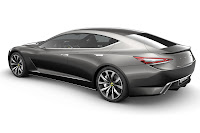
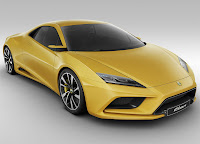 The new Elan is another matter. It's apparent here that Lotus wants to go straight for the Aston's V8 Vantage. They've done it by using a 4.0 liter 450bhp V6 and another supercharger, which is necessary lugging around the 2,850lb weight. For comparison, an original Elan weighed in at about 1,600lbs.
The new Elan is another matter. It's apparent here that Lotus wants to go straight for the Aston's V8 Vantage. They've done it by using a 4.0 liter 450bhp V6 and another supercharger, which is necessary lugging around the 2,850lb weight. For comparison, an original Elan weighed in at about 1,600lbs. The new Esprit is no less troubling. It uses the same 5.0 V8 as the the Elite and Eterne. It was rumored to use the LFA's V10, but apparently Toyota haven't been forthcoming with that wonderful motor. A shame, that, as the compact 4.8 liter V10 weighs less than the V6 in the Elan, let alone the V8 being used here, which might have helped keep the Esprit's 3,200lb weight under control. This is the car I have the most problems with. It has no reason to exist. I will undercut most of its competitors, but will offer substantially less in terms of engineering. It will be heavier than most, and slightly more powerful. It will be rear drive, but also comes solely with a flappy-paddle gearbox. It's less of an Esprit, and more a De Tomaso Pantera.
The new Esprit is no less troubling. It uses the same 5.0 V8 as the the Elite and Eterne. It was rumored to use the LFA's V10, but apparently Toyota haven't been forthcoming with that wonderful motor. A shame, that, as the compact 4.8 liter V10 weighs less than the V6 in the Elan, let alone the V8 being used here, which might have helped keep the Esprit's 3,200lb weight under control. This is the car I have the most problems with. It has no reason to exist. I will undercut most of its competitors, but will offer substantially less in terms of engineering. It will be heavier than most, and slightly more powerful. It will be rear drive, but also comes solely with a flappy-paddle gearbox. It's less of an Esprit, and more a De Tomaso Pantera.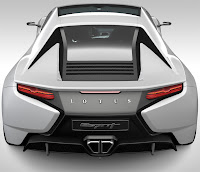
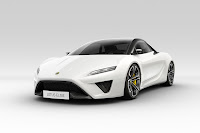 Last is the Elise. This car makes for the most interesting comparison with its predecessor as it's a direct replacement. It's turbocharged, with 316bhp from a 2.0 liter four, and it weighs 2,400lbs, a gain of about 400lbs. All in all, that's not too bad, but I think it could be better. Other sports car manufactures are producing lighter, leaner, more elemental cars. This one is now too much like a Boxster, and it weighs almost as much as a Miata. Lotus can do better, and it should. At least this one looks sort of neat.
Last is the Elise. This car makes for the most interesting comparison with its predecessor as it's a direct replacement. It's turbocharged, with 316bhp from a 2.0 liter four, and it weighs 2,400lbs, a gain of about 400lbs. All in all, that's not too bad, but I think it could be better. Other sports car manufactures are producing lighter, leaner, more elemental cars. This one is now too much like a Boxster, and it weighs almost as much as a Miata. Lotus can do better, and it should. At least this one looks sort of neat.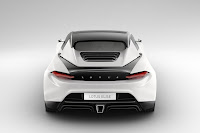

They all sort of look the same though, and none of them look like a Lotus. I think that's because they're not. Lotus is now Proton, through and through. For a long time, Lotus Malaysian masters have taken a hands off approach. That seems to be changing rapidly. I'm sure Lotus have engineered these cars themselves, but they've done so to Proton's directive.
I don't think it will work. Lotus has tried to move upmarket in the past, but they're too small to provide the same level of product completeness of larger fish like Porsche, Ferrari and Aston. They've been able to compensate to an extent by offering off, beat engineering-lead solutions for the problem of making a performance car. Here though, they seem to have lost even that. These cars bring nothing new to the table, and relinquish their light weight birthright in pursuit of mass market acceptance.
They come up short on all counts. The Ferrari 458 Italia and McLaren MP-412C are more advanced and lighter than the new Esprit. The Esprit compensates with slightly more power. Lotus now find themselves ceding home ground to their rivals. The cars may be profitable. They may even be enjoyable to drive. But they're not Lotuses.
Forgive them Colin, for they know not what they do...
Images Pilfered From: Autoblog
